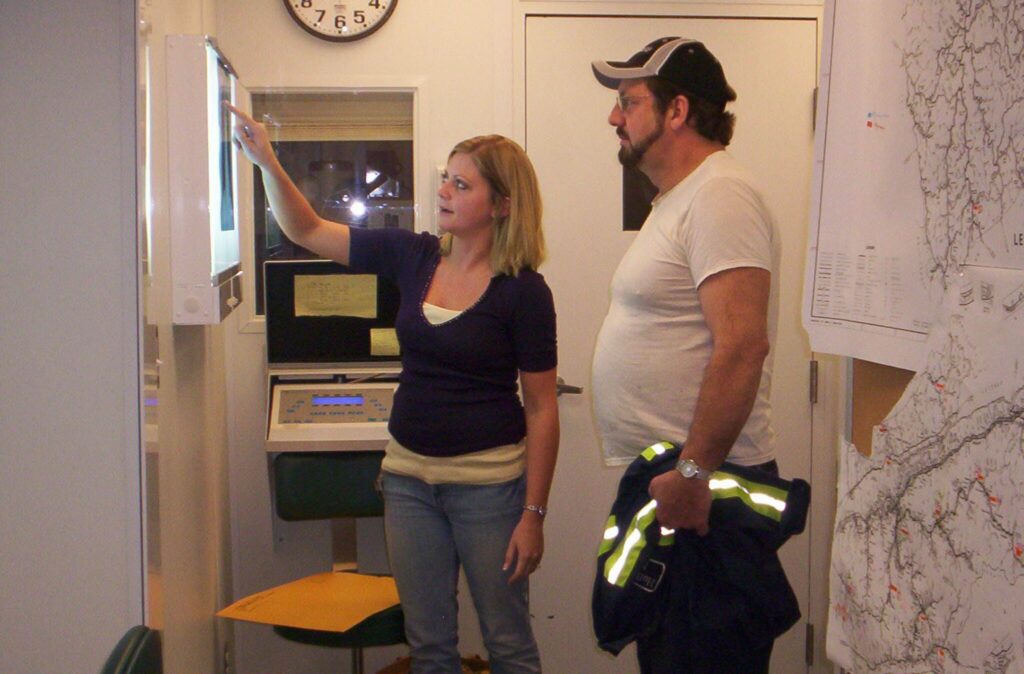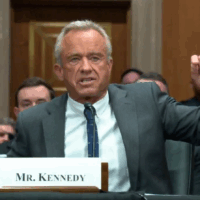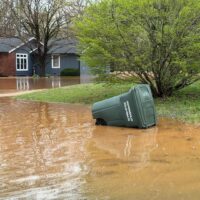Dr. David Blackley came back to his alma mater, East Tennessee State University, with a warning.
A research epidemiologist at the National Institute for Occupational Safety and Health, a component of the Centers for Disease Control and Prevention, Blackley noted an alarming uptick in a disease that at the end of the last century was on the decline: black lung.

Blackley, who earned a doctor of public health degree from ETSU in 2013, made his presentation as part of “Art and Coal in Appalachia,” a panel organized by the ETSU College of Public Health in early April 2024.
Despite a “steep decline in black lung rates” following the passage of the Coal Mine Safety Act of 1969, rates began to rise around the turn of the century. “The prevalence and severity have increased in recent years, especially here in the Appalachian region,” Blackley told an audience of about 50 people at the James and Nellie Brinkley Center on the campus of ETSU in Johnson City, Tennessee.
Now, one in five miners experiences black lung, he said. This rise in incidents of black lung comes at a time when state lawmakers made it more difficult for miners to be diagnosed. In 2018, Kentucky’s Republican-controlled legislature passed a law restricting diagnosis and assessment for compensation to only pulmonologists, doctors specializing in the lungs and respiratory system.
At the time, only six pulmonologists in the entire commonwealth had the proper federal certification to diagnose the disease, and as NPR reported following the law’s passage, “four of them routinely are hired by coal companies or their insurers.”
Today, only one doctor in the Bluegrass State is certified to diagnose black lung.
According to NIOSH spokesperson Christina Spring, the institute “was not consulted about this bill,” despite being the agency responsible for training and certifying the medical professionals (known as B Readers) who diagnose black lung. “There is no evidence that performing ILO classification, a standardized process for describing findings present on chest radiographic images used in evaluating black lung cases, is done differently by B Readers with medical backgrounds in radiology vs. pulmonology,” she added in a 2018 statement.
The United Mine Workers of America, a labor union representing coal miners, claimed that “radiologists have a slight edge with 90% passing exams in the last 10 years, while 85% of pulmonologists were recertified.” The UMWA opposed the Kentucky law, one which radiologist Brandon Crum says is putting the commonwealth’s miners at a unique disadvantage.
“I know of nowhere in the United States of America or the world except Kentucky where radiologists cannot read chest X-rays to diagnose a disease,” Crum told NPR in March. He says the law changed “because I found too much black lung and complicated black lung. It’s the truth.”
A 2021 study from the University of Illinois Chicago (UIC) corroborates Crum’s assertion. It found “financial conflicts of interest that exist among doctors who review the chest X-rays of coal miners who file workers’ compensation claims of totally disabling diseases with the U.S. Department of Labor’s Federal Black Lung Program.” UIC researchers found these doctors “were strongly associated with the party that hired them,” and that party was frequently the coal companies. Doctors who were ever hired by the coal miner’s employer “read the images as negative for [black lung] in 84.8% of the records” reviewed by researchers.
Crum contacted NIOSH in 2016, concerned by the rising numbers of black lung he was seeing in the eastern coalfields. “Ultimately he identified 60 cases of severe black lung over a year and a half period,” Blackley says. “Most of these were miners that worked as either roof bolters or continuous miner operators. Both of those are very dusty jobs at the coal face.”
Most of the modern black lung cases, Blackley points out, come not from coal dust but from silica inhalation in the process of accessing coal beds, which after more than 100 years of mining are increasingly inaccessible, requiring drilling through sandstone beds to access smaller veins of coal as the larger, more accessible veins have increasingly been extracted.
Pointing to a published report of 19 Appalachian coal miners with severe black lung, Blackley said they all reported “regularly cutting through rock with machines that were designed to cut coal, and they also reported falsifying dust samples as directed by their employer.”
Coal is softer than the sandstone under Eastern Kentucky, which “is more than 90% quartz-bearing silica,” Blackley explained. The dust these machines put out was not only greater than the amount that may have been put out by proper equipment, but much more dangerous to miners; silica is many times worse for the human lungs than coal dust, itself known to be deadly. “It’s really horrifying to think about how toxic this dust was.”
This uptick in black lung resulting in silica exposure led to the Mine Safety and Health Administration issuing a new rule on April 18. It “lowers the permissible exposure limit for respirable crystalline silica,” creates an “action level for respirable crystalline silica,” includes medical surveillance requirements in some mines, creates uniformity in requirements for controlling and monitoring exposure to crystalline silica, and “updates existing respiratory protection requirements.” This new rule, however, will not go into effect until June, and mine operators have twelve months to bring themselves into compliance.
Mine companies and their allies opposed the rule even before its adoption. “These staggering increases [in black lung diagnoses] deal a significant blow to employers and the overall cost of workers’ compensation in Kentucky,” Tyler White of the Kentucky Coal Association told NPR in 2018. To protect coal companies, last year Republicans in the U.S. House of Representative began maneuvering to block funding for implementation of the rule, a move the Biden Administration opposed.
In his presentation, however, Blackley pointed out that “the opening line of the Coal Act from 1969… says ‘the first priority of all the coal mining industry must be the health and safety of its most precious resource: the miner.’” To do this, public health officials must avoid “complacency,” but regulators have an important role to play in “ensuring that miners are protected from toxic dust exposures, especially silica.” Mine operators, too, must do their part, Blackley says. “It means maintain safe conditions and it also means taking corrective actions when conditions become unsafe.”
Whether this new federal rule will reduce the prevalence of black lung remains to be seen. With only one doctor, who frequently works with coal companies, allowed to diagnose cases in Kentucky, however, for many miners already affected, the rule may have little effect. They will continue to struggle within a system that makes diagnosis and therefore compensation more difficult to obtain.
Still, Blackley hopes the new rule will give miners some ability to advocate for themselves, an essential component in protecting miners from developing black lung in the first place. “For miners, it means feeling empowered and knowing you’re empowered to speak up when there’s a problem without having to worry about losing your job.”
This article first appeared on The Daily Yonder and is republished here under a Creative Commons license.
Skylar Baker-Jordan is a freelance writer whose work has appeared in The Independent, Newsweek, Business Insider, and elsewhere. He is contributing editor for community engagement at 100 Days in Appalachia and currently lives in East Tennessee.






